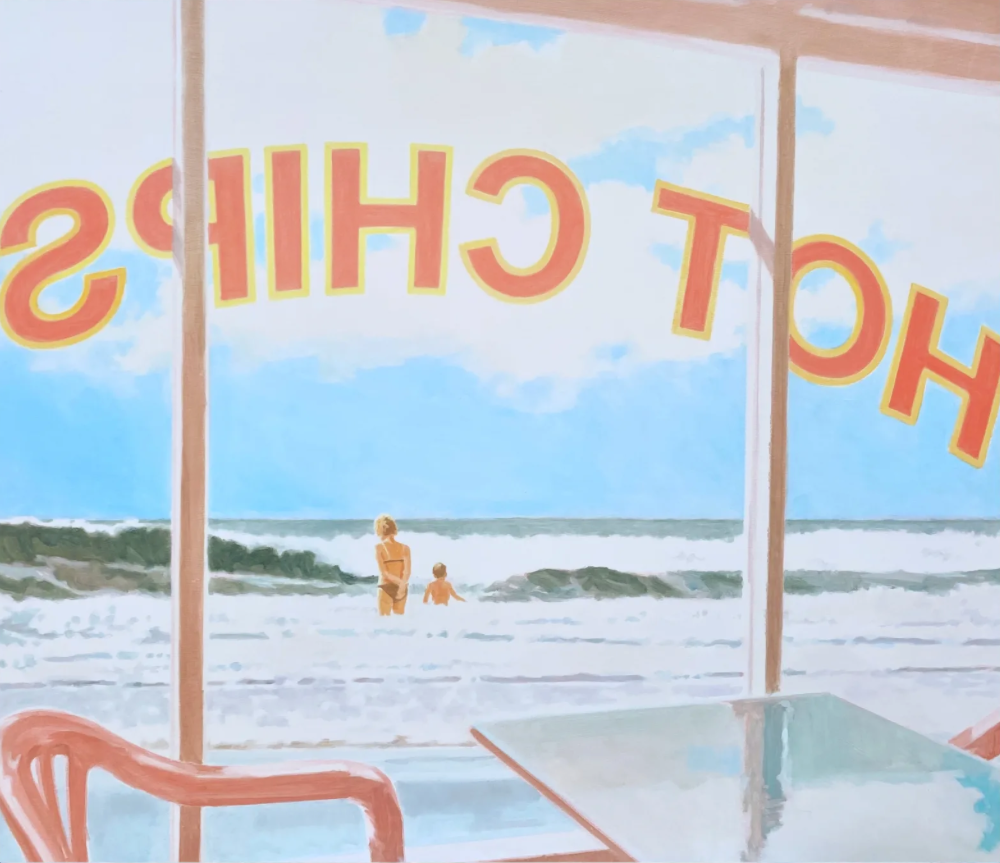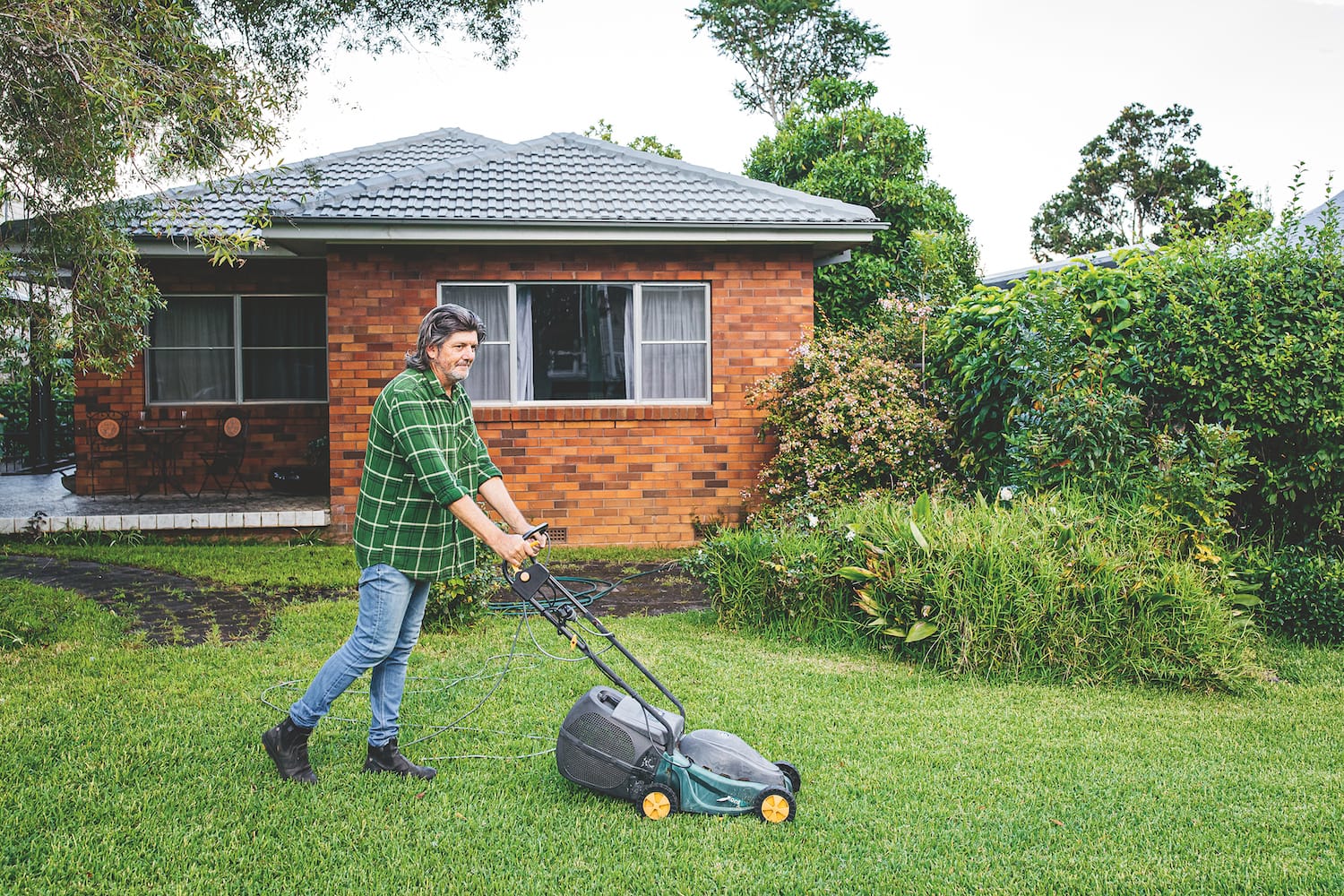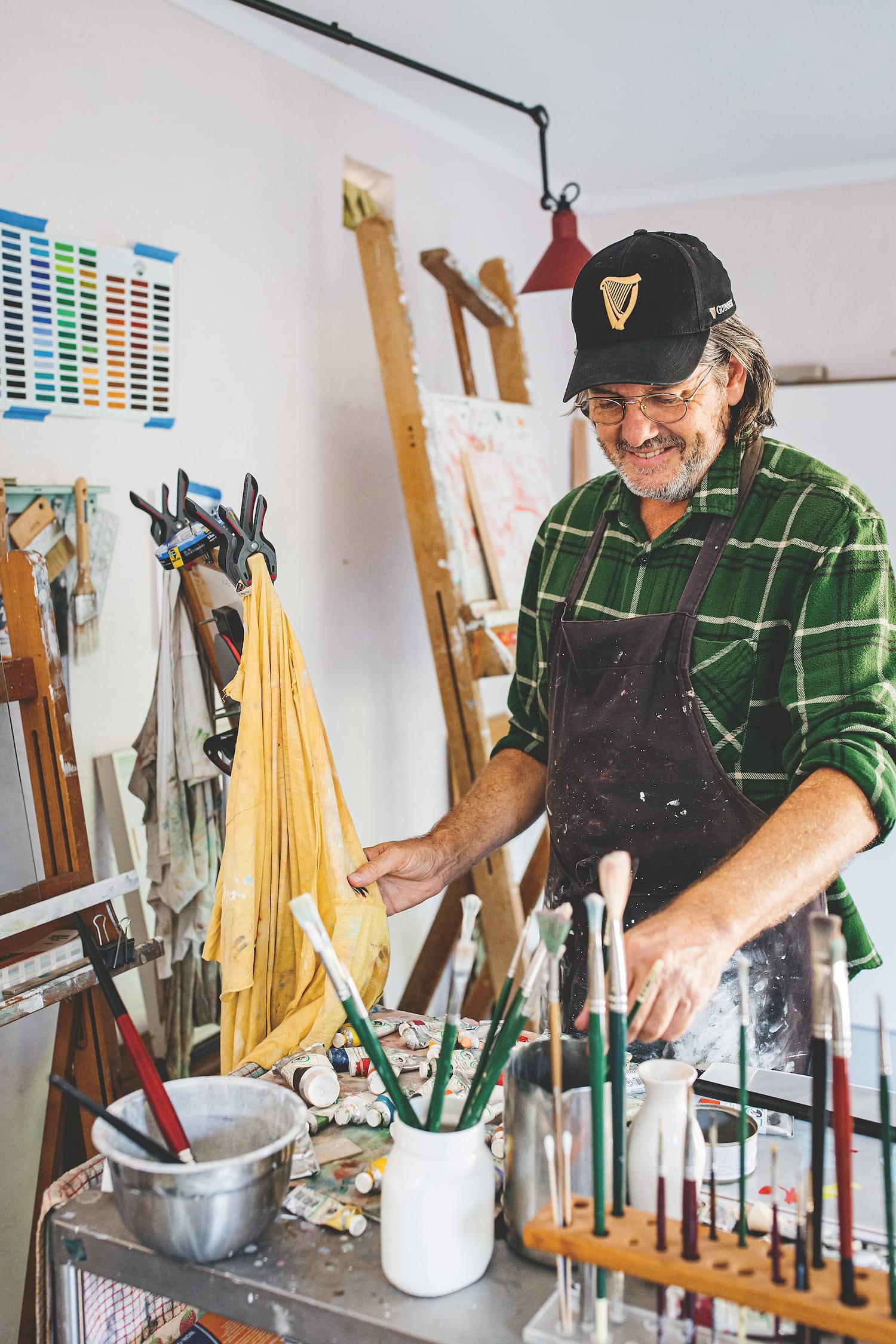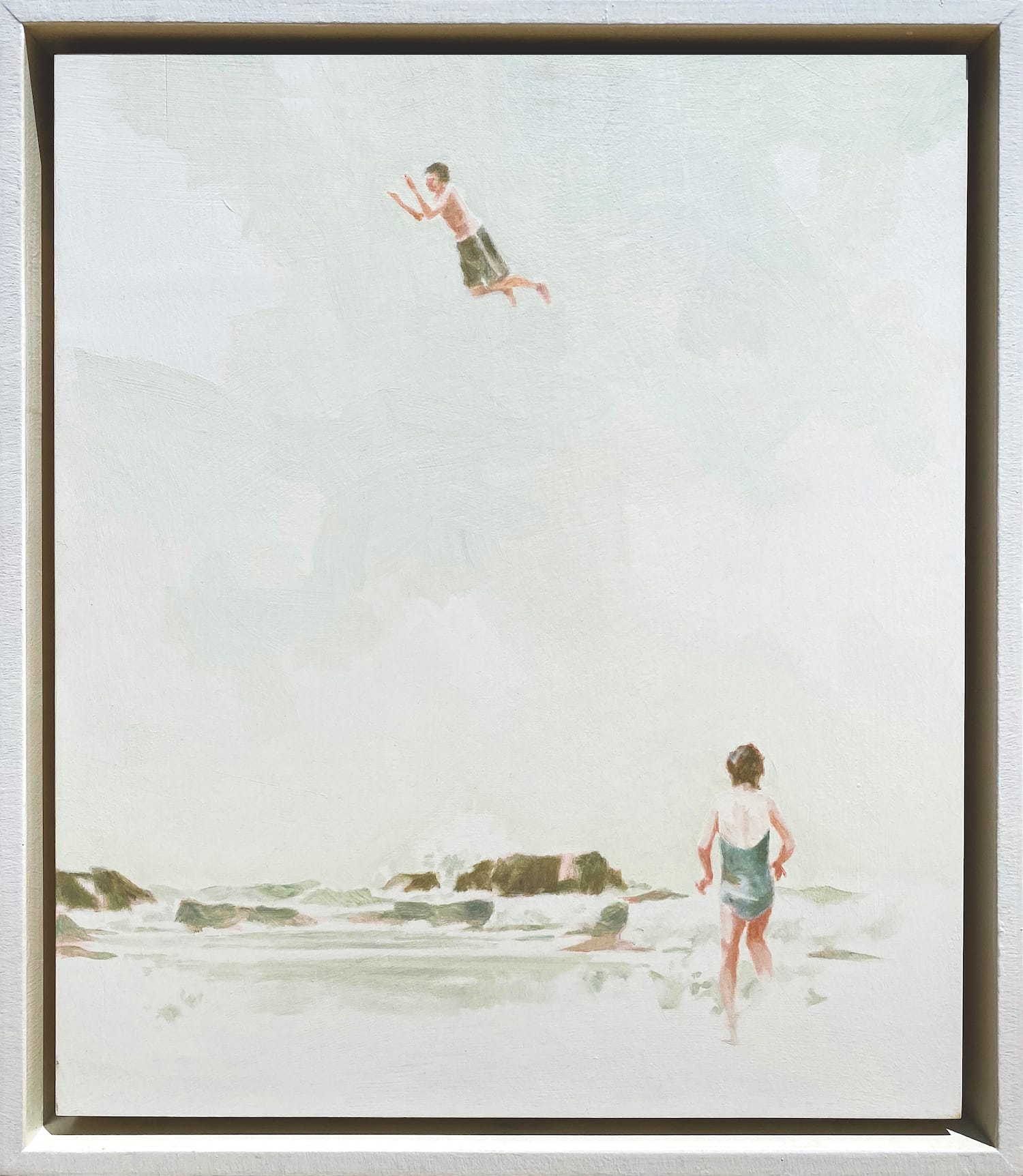
From lawns to laundry, Craig Handley makes sense of domestic life through his art.
Words Amber Cresswell Bell | Photography Lean Timms
Looking at Craig Handley’s paintings has an auditory effect on me: in my mind I am hearing a distant lawnmower, a dog barking and a sprinkler clicking. If I close my eyes and imagine his works, a montage of fifties fibro, breeze blocks, swan flowerpots and kangaroos against faded blue skies converges onto the cinematic projector screen of my mind’s eye. And montage might be just the right word. By his own description, Craig sees his work simply as ‘a medley, a collage of all the things I come across while travelling about. They are rearrangements, a hodgepodge of places and objects and light.’

Born and raised in Sydney suburbia, he knows the trope well. But eighteen months ago, Craig felt the lure of change and ventured south to Berry, a bucolic New South Wales south-coast hinterland town that promotes itself as the ‘town of trees’. It has a distinctly English feel, likely owing to the ubiquitous greenness of it all, the numerous preserved historic buildings, and extensive stands of English oaks, elms and beech trees planted by the local settlers at the end of the last century. It’s a town where one might well have a romantic stay in a bed-and-breakfast and go ‘antiquing’. Despite this, Craig and his wife Christina managed to move into one of the few classic Australian sixties red-brick three-fronters that exist in Berry. The house stands on a modest block with a neatly mowed lawn. ‘People like to say that I moved into one of my paintings,’ says Craig.
Berry poses a stark contrast to his digs prior to the move, when Craig lived and had his studio in the guts of Woolloomooloo, in inner-city Sydney, and he says he is still adjusting to the differences. ‘It’s the quiet that hit me the most initially, the lack of city smells, the night sky, the abundance of bird life ... so many things,’ he reflects. ‘Woolloomooloo was a unique and lively place to be, with a very strong sense of community, but also a lot of heaviness to witness on a daily basis. Makes you very aware of the slippery slope.’ Seeing Berry as a kind of stepping stone, the longer-term plan is to move somewhere more isolated, with a bit of land around them.
Three years shy of sixty, Craig has been working as a full-time artist since 2004. He originally left school and took on a signwriting apprenticeship which later led him into animation—a career that sustained him for decades both here and abroad. ‘I climbed to the level of director, then crashed and burned. Since then, it’s just been painting, painting, painting for almost 20 years.’





Despite his geographical shifts from suburban life and city studios and tree changes, Craig has maintained a steadfast compulsion to examine and paint the things he is witness to on a daily basis. ‘I question constantly: motives and cycles and repetitions and demands and pressures and burdens,’ he considers, ‘the things that are very common to a lot of us, the joys and disappointments and the difficulties. The source material is endless and constantly challenging.’ What Craig masters in his output is the ability to convey it in an entertaining way, with a layer-cake of stories, but it is the composition that is paramount. ‘I try to make that the first point of engagement,’ he says.
Shortlisted as a finalist in notable art prizes more than 80 times in the past decade, Craig works sparingly in oil, producing images that I suggest to him might be considered as ‘surrealist’; he counters that it is probably more accurately described as ‘realist’. ‘I feel because of my time in directing, my work is very story-based and filmic in its realisation. It is very much a camera point of view with a set designed specifically for a narrative that, more often than not, involves a cast of players,’ he explains. ‘So perhaps “narrative painting” is a better descriptor.’
Craig’s work appears to be anchored devoutly in the notion of the Australian domestic, and he has tirelessly examined this subject. ‘I find the domestic very difficult but have found a way to navigate it all through painting,’ he offers. ‘Most of my work, if not all of it, draws on the constant toll-taking of the daily grind, from lawns to laundry and all the whatnots.’ He acknowledges that as he is now a bit older, he has an advantage. ‘I am in a good place to be able to paint. My kids are older and establishing themselves in their own ways so that time-heavy, emotion-heavy, toll-taking period is back there in the fog somewhere!’
Now considering himself lucky to be in a position where painting can be his main activity, it’s the staying focused part that Craig finds most challenging, admitting that he is very easily distracted. Attempting to maintain a routine, Craig will paint every day. ‘It doesn’t get any easier though!’ Craig admits. ‘I am also lucky that my studio is now in the backyard ... and that can be a double-edged sword. Have I earned this fortunate position I’m in? Who’s to say? Everything has its costs I suppose.’